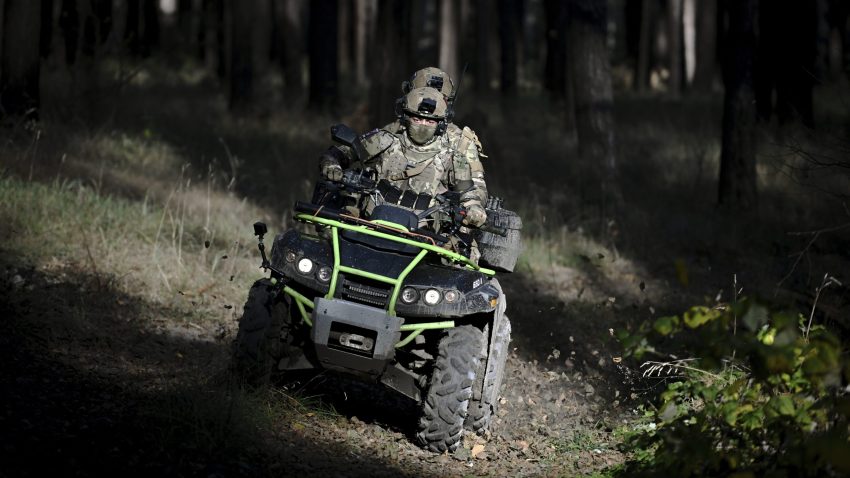In a conflict that has had its share of surreal moments, images of Russian troops charging Ukrainian fortifications in glorified golf carts seem to encapsulate the absurdities of Vladimir Putin’s war against Ukraine. First spotted in December 2023, Russian assaults in Chinese-made all terrain vehicles, or ATVs, are now a daily occurrence along the frontlines. The ATVs are vulnerable to Ukrainian artillery when spotted by drones, but what seems like tactical Russian roulette is also an indication of how Moscow is adapting to new battlefield challenges in Ukraine and changing economic realities in Russia.
As with other desperate gambits by the Russian military since the start of its invasion of Ukraine in February 2022, Ukrainian officers' initial bemusement was followed by growing concern as the purpose of these ATVs became clear. Though their lack of armor means discovery by Ukrainian drones often has fatal outcomes for Russian troops using them, their ability to move quickly without generating much dust can enable skilful units to take opponents by surprise. For military analysts such as FPRI’s Rob Lee, this shift towards more effective use of ATVs and other light vehicles in a bloody process of trial and error is proof of how parts of the Russian military are still able adapt to new challenges despite the institutional dysfunctions of the Putin regime.
The manner in which Russian officers have adopted ad hoc solutions that diverge from their pre-war operational doctrines is a sign of how intense attritional warfare in Ukraine is reshaping Russia’s military and economy. While mechanized formations combining tanks, artillery and armored vehicles deployed in so-called Battalion Tactical Groups, or BTGs, were at the core of Russian operational planning before this war, the failure to seize Kyiv and ensure swift victory forced Russia’s military leadership to face challenges it had not initially anticipated. The adoption of an attritional approach halted Ukrainian advances after Russian defeats around Kyiv, Kharkiv and Kherson, and this recalibration towards grindingly slow assaults at the cost of immense losses marked a shift away from the Russian army’s pre-war emphasis on BTG structures that combined armored firepower with mobility.

